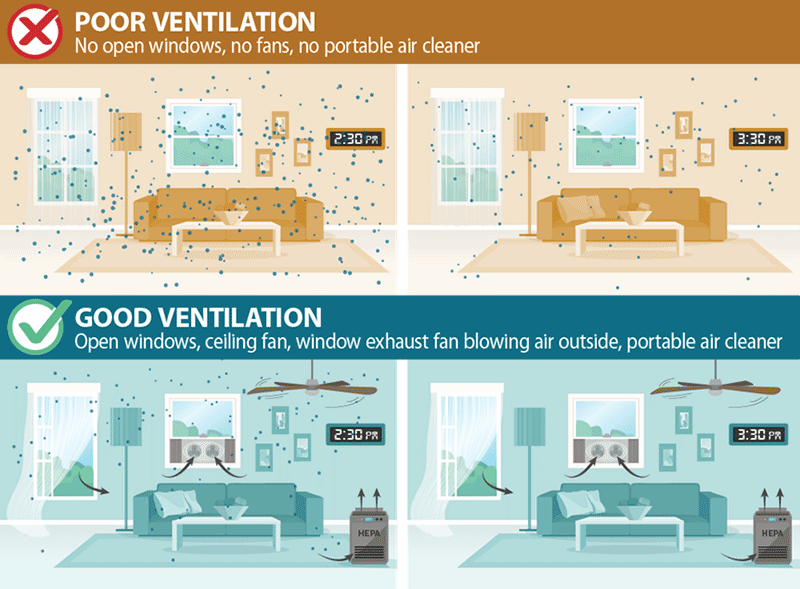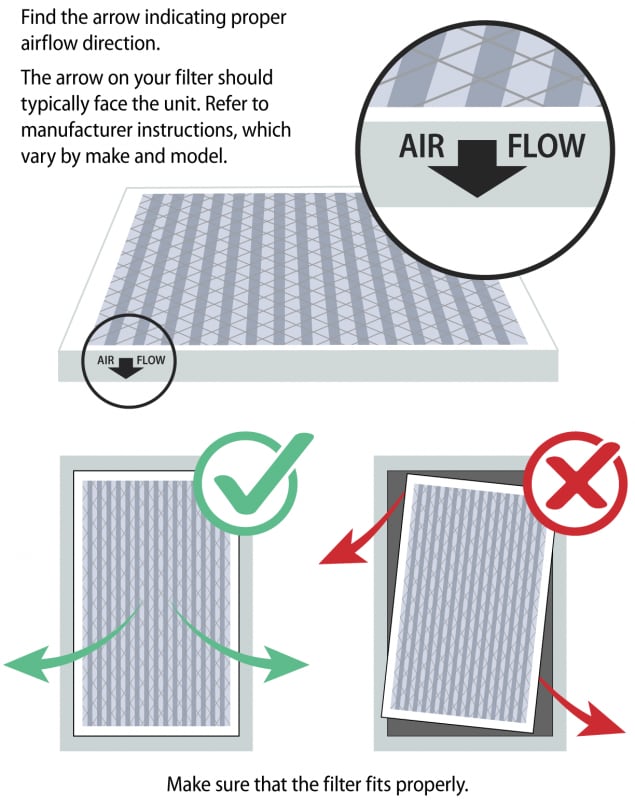Home Ventilation Melbourne vs DIY Options: Which Works Best?
Wiki Article
Understanding the Importance of Home Air Flow for a Healthier Living Environment
Home air flow plays a vital role in preserving a healthy and balanced living environment. It helps with the exchange of interior and outdoor air, which is important for enhancing air quality. Without proper air flow, homes can become breeding premises for toxins and allergens. The effects of inadequate air blood circulation can be substantial. This raises the inquiry of just how property owners can effectively execute ventilation strategies to protect their health and wellness. Comprehending these techniques is essential.
The Essentials of Home Air Flow
Home air flow functions as an essential component of indoor air high quality and convenience. It involves the process of exchanging stagnant indoor air with fresh outdoor air, thus lowering moisture and controlling temperature. Correct ventilation systems can include all-natural techniques, such as open windows and vents, along with mechanical systems, such as exhaust fans and air exchangers. Efficient home ventilation assists avoid problems like interior mold development and the buildup of harmful particles. It additionally improves general power effectiveness, as well-ventilated rooms can preserve comfy temperature levels with much less reliance on home heating and cooling systems. Comprehending the essentials of home air flow is crucial for property owners seeking to develop a much healthier living atmosphere on their own and their family members.
Common Sources of Indoor Air Contamination

Although several might not recognize it, indoor air contamination can originate from different sources within a home. Typical factors include volatile natural compounds (VOCs) released from paints, solvents, and cleansing products. House appliances, such as gas stoves and fireplaces, can launch dangerous gases like carbon monoxide gas and nitrogen dioxide. In addition, mold and mildew prosper in moist locations, launching spores that affect air high quality. Animal dander, dirt mites, and pollen can collect inside, additional worsening contamination degrees. Smoking inside generates toxic chemicals that linger airborne. Developing materials, consisting of asbestos and formaldehyde, can off-gas harmful materials. Recognizing these sources is necessary for keeping a much healthier indoor setting and advertising effective ventilation techniques.
Wellness Consequences of Poor Air Flow
Indoor air pollution can have substantial wellness ramifications, particularly when ventilation is insufficient. Poor ventilation can result in the accumulation of harmful pollutants, such as unpredictable natural substances, mold and mildew, and particulate issue. This accumulation may cause respiratory concerns, including asthma, allergic reactions, and chronic obstructive pulmonary illness. Individuals might experience symptoms like headaches, tiredness, and irritation of the eyes, nose, and throat. Susceptible populaces, such as children and the senior, are at higher threat for severe health and wellness impacts. Long-term exposure to improperly aerated settings he said can likewise add to a lot more severe conditions, consisting of heart diseases. As a result, making sure appropriate air flow is crucial for preserving a healthy living atmosphere and reducing the danger of health and wellness issues linked with indoor air contamination.Effective Air Flow Techniques for Your Home
Proper ventilation is necessary for preserving a healthy and balanced interior setting, and executing efficient techniques can significantly enhance air quality. Property owners can begin by making certain that exhaust fans are installed in bathrooms and cooking areas to remove excess wetness and odors. Opening up home windows consistently permits fresh air to circulate, specifically throughout mild climate. Furthermore, using air cleansers with HEPA filters can help record air-borne pollutants. For homes with home heating and cooling down systems, keeping heating and cooling systems and changing filters frequently is crucial for peak efficiency. Including natural air flow techniques, such as cross-ventilation, can additionally enhance air movement. Lastly, securing any kind of leaks in doors and windows prevents unwanted drafts, which can interfere with regulated airflow, ultimately causing improved indoor air high quality and comfort.Keeping Optimal Air High Quality Year-Round
To preserve ideal air quality year-round, house owners should embrace Home Ventilation Melbourne a positive method to managing their interior setting. On a regular basis keeping track of interior air quality is important; this includes monitoring for contaminants such as dust, mold, and unstable organic compounds (VOCs) Implementing effective ventilation systems, such as exhaust followers and air cleansers, can substantially decrease air-borne impurities. Additionally, regular upkeep of HVAC systems guarantees peak performance and air circulation. Home owners should additionally consider moisture levels, as too much dampness can lead to mold and mildew growth. Seasonal modifications may necessitate modifications in air flow approaches to fit varying outdoor air top quality. By prioritizing these methods, home owners can develop a much healthier space, advertising total wellness for all owners throughout the year.Regularly Asked Questions
Just How Can I Inform if My Home Needs Better Air Flow?
To identify if a home calls for much better ventilation, one need to observe indications such as persistent moisture, mold and mildew growth, moldy odors, condensation on windows, or increased allergic reaction signs, suggesting poor airflow and potentially poor indoor air top quality.What Are the Signs of Poor Indoor Air Quality?

Can Houseplants Improve Indoor Air Top Quality Properly?
The efficiency of houseplants in improving indoor air quality is discussed. While some studies suggest they can take in toxic substances and generate oxygen, their total effect may be minimal contrasted to proper ventilation and air filtering systems.Just how Often Should I Change My Air Filters?
The frequency of air filter changes normally depends on usage and filter kind. Normally, it is recommended to change filters every 3 months, though households with allergies or animals may need more regular changes for suitable efficiency.Exist Any Details Air Flow Systems for Allergy Sufferers?
Lots of ventilation systems, such as HEPA-filtered systems, successfully decrease irritants airborne. Home Ventilation Melbourne. These systems catch pollen, animal, and dirt dander, offering allergic reaction sufferers with a cleaner, much healthier indoor atmosphere while handling air quality successfully
It assists in the exchange of exterior and indoor air, which is important for enhancing air high quality. Home ventilation offers as a vital element of interior air quality and convenience. It includes the procedure of trading stale indoor air with fresh exterior air, therefore minimizing humidity and controlling temperature level. Indoor air pollution can have significant wellness effects, particularly when air flow is insufficient. Appropriate air flow is crucial for keeping a healthy and balanced indoor environment, and executing reliable methods can greatly boost air top quality.
Report this wiki page